Chopta Tungnath Trek from Delhi: A Journey to the Heart of the Himalayas
Published on February 18, 2025
Whether you're an avid trekker or a spiritual seeker, the Chopta Tungnath trek from Delhi offers something for everyone. Embark on an exhilarating journey to Chopta, often referred to as the "Mini Switzerland of India," and the sacred Tungnath Temple, the highest Shiva temple in the world. This trek, starting from Delhi, is a perfect blend of spirituality, adventure, and breathtaking natural beauty.
Located in the Garhwal region of Uttarakhand, Chopta is a paradise for nature lovers and trekkers alike. Often referred to as the "Mini Switzerland of India," it offers a tranquil retreat in the lap of the Himalayas. The region is home to several popular trekking routes, and one of the most famous among them is the Chopta Tungnath Trek. This trek not only provides stunning views of snow-capped peaks but also gives trekkers the opportunity to visit Tungnath Temple and Chandrashila Summit, two of the most revered spiritual destinations in the region.
If you’re planning a trek to Chopta from Delhi, this article will guide you through the best times to visit, the trek routes, the beautiful landmarks along the way, and more.
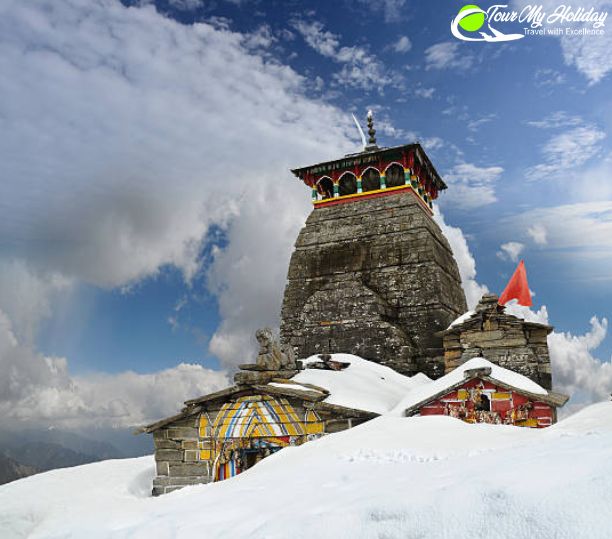
Chopta Tungnath Trek
The Chopta Tungnath Trek is an easy-to-moderate trek that is suitable for beginners and experienced trekkers alike. This trek is part of the Tungnath Chandrashila Trek, which is one of the most popular trekking routes in Uttarakhand, providing breathtaking views of the Himalayas and immersing you in the spiritual aura of the Tungnath Temple—the highest Shiva temple in the world. The trek extends all the way to Chandrashila Summit, where you can enjoy panoramic views of surrounding peaks like Nanda Devi, Trishul, and Chaukhamba.
The Tungnath Temple Trek offers a unique combination of spiritual significance and natural beauty. Whether you are a devout pilgrim seeking blessings at one of Lord Shiva’s holiest shrines or an adventure lover seeking an adrenaline rush in the Himalayas, this trek is sure to offer an unforgettable experience. From the challenging ascent to the rewarding views at the top, the trek is a journey worth taking for those seeking tranquility, adventure, and a deeper connection to the mountains.
The Tungnath Temple Trek is a memorable journey that offers stunning mountain views, spiritual experiences, and a sense of accomplishment once you reach the highest Shiva temple in the world. The trek to Chandrashila Peak is an additional highlight that rewards trekkers with panoramic views of the mighty Himalayas, making this an adventure not to be missed.
Tungnath Temple Trek Itinerary
The Tungnath Temple Trek is a wonderful blend of adventure, spirituality, and natural beauty, taking trekkers through stunning landscapes in Uttarakhand. The trek not only offers a chance to visit the highest Shiva temple in the world but also allows trekkers to enjoy panoramic views of the mighty Himalayan peaks. Here's a 4-day itinerary that covers the highlights of the trek, including visits to Deoria Tal and Chandrashila Peak.
Day 0: Arrival at Sari Village
- Arrival at Sari Village:
- The journey begins with your arrival in Sari Village, located at an altitude of around 2,400 meters. Sari is the base point for the trek to Deoria Tal and is a picturesque village surrounded by lush green landscapes.
- After arrival, check into your accommodation or homestay. You will have some time to rest and acclimatize to the altitude before starting your trek the next day.
- Overnight Stay: Stay in a guesthouse or homestay in Sari Village.
Day 1: Sari Village to Deoria Tal
- Distance: 2.5 km (Trek one way)
- Trek Duration: 3 to 4 hours (one way)
- Altitude: 2,400 meters (Sari Village) to 2,438 meters (Deoria Tal)
- Morning:
- After breakfast, start your trek from Sari Village towards Deoria Tal, a beautiful lake surrounded by forests and offering spectacular views of the Chaukhamba and Kedarnath peaks.
- The trail to Deoria Tal is relatively short and easy, making it a great warm-up for the more challenging trek to Tungnath in the following days.
- Enjoy the serene atmosphere around the lake. The reflections of the surrounding peaks in the lake’s waters are truly mesmerizing.
- Evening:
- Spend time relaxing by the lake, surrounded by nature. It’s a great spot for photography and appreciating the majestic views.
- Overnight Stay: Stay in a camp or guesthouse near the lake, with views of the surrounding mountains and pristine nature.
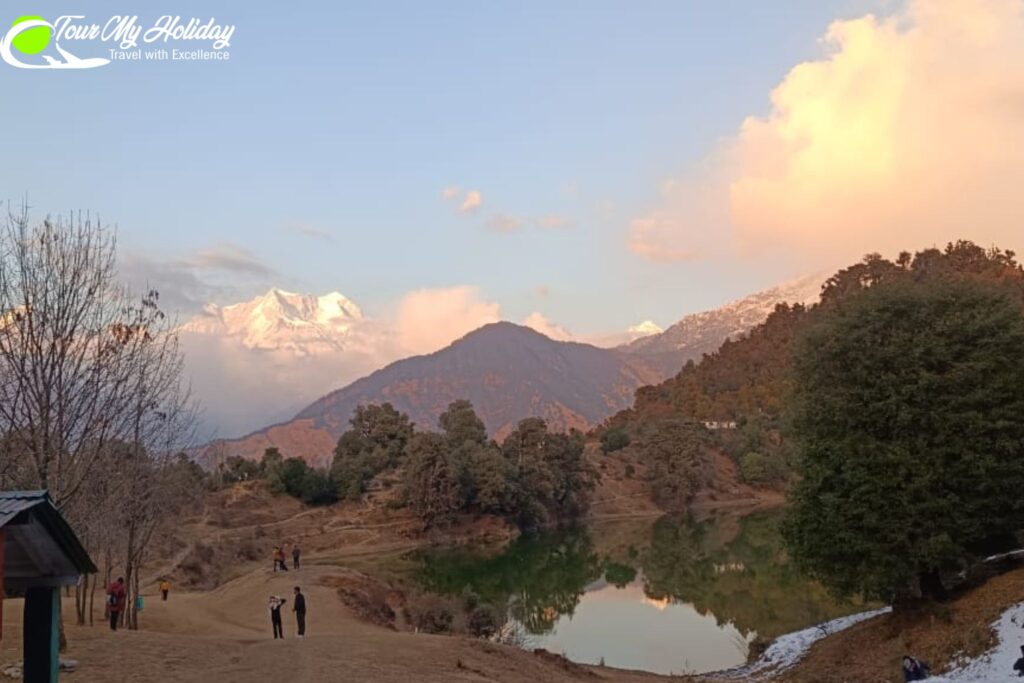
Day 2: Trek to Tungnath Temple and Chandrashila Peak
- Distance: 3.5 to 4 km (Trek one way to Tungnath)
- Trek Duration: 4 to 6 hours (one way to Tungnath)
- Altitude: 2,438 meters (Deoria Tal) to 3,680 meters (Tungnath Temple)
- Morning:
- After an early breakfast, head back to Sari Village and then drive to Chopta (base for the Tungnath trek). Alternatively, if you're staying in Sari, you can begin the trek to Tungnath directly from Sari.
- Start your trek to Tungnath Temple. The trek to Tungnath takes about 4-6 hours and is moderately challenging due to the altitude and steep ascent.
- The path passes through beautiful rhododendron forests, oak trees, and meadows, offering stunning views of the Himalayas. Along the way, you may encounter wildlife like mountain goats and various bird species.
- Afternoon:
- Upon reaching Tungnath Temple, take some time to explore this ancient temple dedicated to Lord Shiva. It is one of the Panch Kedar temples, making it an important pilgrimage site for Hindus.
- From Tungnath, you can opt for an additional trek to Chandrashila Peak (approximately 1 hour). The peak offers breathtaking panoramic views of the Nanda Devi, Trishul, Chaukhamba, and other majestic Himalayan peaks.
- Evening:
- Return to Tungnath Temple for the evening prayer ceremony (if you wish).
- Head back down to Chopta for your overnight stay, where you can relax and reflect on the day’s adventure.
- Overnight Stay: Stay in Chopta in guesthouses or camps.
Day 3: Chopta to Sari Village and Departure to Delhi
- Distance: 200 km (Drive from Chopta to Sari Village/Delhi)
- Morning:
- After breakfast, pack your bags and begin your drive back to Sari Village (if you're starting from Chopta). From here, you can take a vehicle back to Delhi.
- The drive back to Delhi typically takes around 9-10 hours, so it's recommended to start early in the morning. The scenic drive through the winding mountain roads offers a relaxing conclusion to the trekking adventure.
- Afternoon/Evening:
- Arrive in Delhi by evening, concluding your Tungnath Temple Trek.
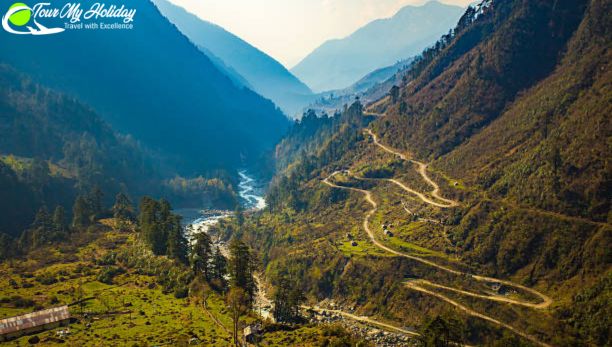
Getting to Chopta from Delhi: Travel Details
The distance from Delhi to Chopta is approximately 400 km by road. The most convenient way to travel to Chopta from Delhi is by taking a bus or a private vehicle to Rishikesh or Haridwar. Once you reach Rishikesh or Haridwar, you can hire a taxi or a shared vehicle to reach Chopta. The road journey takes around 10-12 hours depending on traffic and road conditions.
For those traveling by train, Haridwar is well-connected to Delhi via trains such as Shatabdi Express and Nanda Devi Express. From Haridwar, you can hire a taxi or take a bus to reach Chopta.
Chopta Tungnath Trek: An Overview of the Trek Route
The Chopta Tungnath Trek starts from Chopta, which is often referred to as the "base camp" for this trek. The trek to Tungnath Temple is approximately 3.5 kilometers (one way) and takes around 3-4 hours to complete. It is an easy-to-moderate trek that takes you through a beautiful forest trail surrounded by lush meadows and dense oak and rhododendron forests. The scenic beauty along the route makes the trek even more enjoyable, and you can catch glimpses of wildflowers, birds, and other flora and fauna as you ascend.
Once you reach Tungnath Temple, you can explore the ancient temple, which holds immense spiritual significance for Hindus. The Tungnath Temple is part of the Panch Kedar group of temples and is dedicated to Lord Shiva. It is situated at an altitude of 3,680 meters (12,073 feet), making it the highest Shiva temple in the world.
Tungnath Temple to Chandrashila Summit: The Final Ascent
The Chandrashila Summit Trek is a continuation of the Tungnath Temple Trek. After visiting the temple, trekkers can choose to hike further to Chandrashila, which stands at an altitude of 4,000 meters (13,123 feet). The trek from Tungnath Temple to Chandrashila Summit is approximately 1.5 kilometers and takes around 1-2 hours. The trail to the summit is more challenging and steeper but offers awe-inspiring views of the surrounding Himalayan peaks, including Nanda Devi, Trishul, Chaukhamba, and Kedarnath.
The Chandrashila Summit Trek is a must-do for those who seek both a physical challenge and a spiritual experience. The summit is known for its peaceful and meditative atmosphere, and many trekkers take a moment to reflect and enjoy the panoramic views of the majestic mountains.
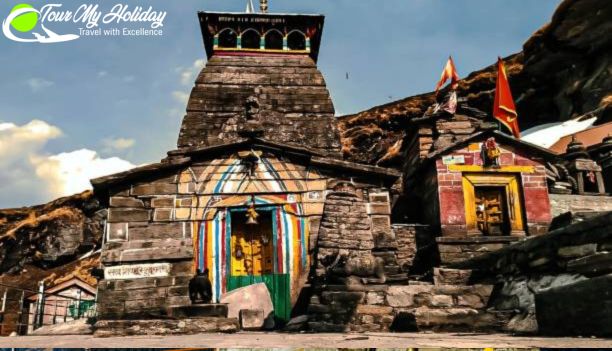
Deoria Tal: A Scenic Lake Trek
In addition to the Chopta Tungnath Trek and Chandrashila Summit Trek, another popular trek in the region is the Deoria Tal Trek. Located at an altitude of 2,438 meters, Deoria Tal is a beautiful alpine lake surrounded by dense forests and offering a mirror-like reflection of the Chaukhamba Peak in its crystal-clear waters. The trek to Deoria Tal starts from Sari Village, which is about 12 kilometers from Chopta. It is an easy trek that takes around 2-3 hours to complete, making it an ideal addition to your Chopta tour package.
The tranquil beauty of Deoria Tal and its surroundings make it a great spot for camping and photography. It is also a popular location for birdwatching, as the region is home to various species of birds.
Best Time to Visit Chopta: A Seasonal Guide
Chopta, often called the "Mini Switzerland of Uttarakhand," is a scenic gem in the Garhwal Himalayas. Its lush greenery, snow-capped peaks, and trekking trails attract tourists year-round. However, the best time to visit Chopta depends on the kind of experience you’re seeking. Here's a detailed guide to help you decide:
1. Summer (March to June)
Ideal for: Pleasant weather, trekking, and sightseeing.
- Temperature Range: 10°C to 25°C (50°F to 77°F)
- Why visit in summer? Summer is considered the peak tourist season in Chopta due to its pleasant weather. The temperatures are mild, making it perfect for outdoor activities such as trekking, sightseeing, and nature walks. This is the best time to visit if you're planning to trek to the Tungnath Temple (one of the highest Shiva temples in the world) and enjoy the panoramic views of the Himalayan peaks. The region is also lush and green during this time, with rhododendrons and other flowers in full bloom.
2. Monsoon (July to September)
Ideal for: Adventurous travelers (but with caution).
- Temperature Range: 15°C to 20°C (59°F to 68°F)
- Why avoid during the monsoon? Although monsoon brings vibrant greenery to the landscape, it is not the best time to visit Chopta. The region experiences heavy rainfall, which increases the risk of landslides and roadblocks. Trekking can be slippery and unsafe due to the wet conditions, and the visibility might be poor because of the cloud cover. If you still plan to visit during the monsoon, be prepared for disruptions and carry rain gear.

3. Autumn (October to November)
Ideal for: Clear skies, beautiful landscapes, and peaceful treks.
- Temperature Range: 5°C to 20°C (41°F to 68°F)
- Why visit in autumn? Autumn is one of the best times to visit Chopta, as the weather is crisp and pleasant, with clear skies and minimal rainfall. This season offers the perfect conditions for trekking, especially for those seeking a peaceful retreat away from the crowds. The lush greenery of the summer months begins to transform, offering beautiful landscapes filled with vibrant fall foliage. It’s also an excellent time for photography, with the majestic Himalayan ranges visible in their full glory.
4. Winter (December to February)
Ideal for: Snow lovers and winter activities.
- Temperature Range: -5°C to 10°C (23°F to 50°F)
- Why visit in winter? If you're a fan of snow, winter in Chopta is a magical experience. The region is blanketed in snow, transforming it into a winter wonderland. This is the best time for those interested in snow trekking, skiing, and enjoying the peaceful winter landscape. The famous Tungnath Temple remains accessible, though the trek might be more challenging due to the snow. Winter is the perfect time for solitude and a quiet, serene experience, but be prepared for extreme cold temperatures.
Each season in Chopta offers a different experience, so the best time to visit depends on your interests—whether it's trekking, photography, snow activities, or simply enjoying the natural beauty of the region.
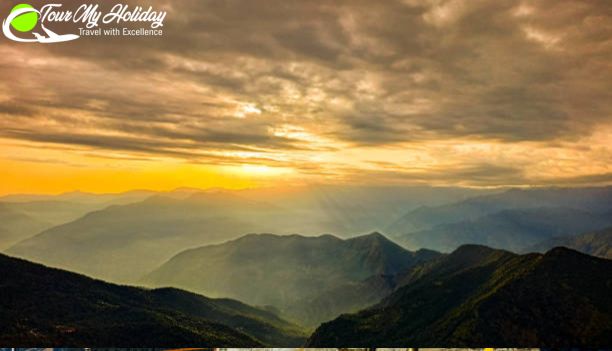
What to Pack for the Tungnath Temple Trek
1. Clothing:
- Trekking Shoes: A good pair of sturdy, comfortable, and waterproof trekking shoes with a solid grip is essential, especially for the rugged terrain.
- Warm Layers: The weather can be unpredictable, so pack layers. Include:
- Thermal wear (upper and lower)
- Fleece jacket for insulation.
- Down jacket (especially in winter, as temperatures can drop significantly).
- Rain Gear: A lightweight rain jacket or a poncho is necessary, as weather conditions can change quickly.
- Trekking Pants: Choose lightweight, quick-dry pants that allow for ease of movement.
- T-shirts: Quick-dry T-shirts are ideal for the trek.
- Woolen Caps/Beanies: To keep your head warm in cold weather.
- Gloves: Light gloves for summer treks, and thicker gloves if you’re trekking in winter.
- Socks: Pack enough pairs of woolen or moisture-wicking socks (at least 3–4 pairs) to keep your feet dry and warm.
2. Essential Gear:
- Backpack: A comfortable and sturdy daypack (20-30L) to carry your essentials. Make sure it’s lightweight and has padded straps for comfort.
- Water Bottle/Hydration Pack: Staying hydrated is crucial, so carry a water bottle (preferably 1-1.5L). Some prefer a hydration pack for easy sipping while walking.
- Trekking Poles: Especially helpful for descents and uneven terrains, trekking poles provide added stability and reduce strain on your knees.
- Sunglasses: UV-protection sunglasses are important, as the sun's rays can be intense in the mountains.
- Headlamp/Flashlight: The trek may take longer than expected, and you might be trekking in low light, so a headlamp or flashlight is essential.
- Sun Protection:
- Sunscreen (SPF 30 or higher) to protect your skin from UV rays.
- Lip balm with SPF to prevent chapped lips.
- Hats or caps to shield your face from the sun.
3. Personal Care Items:
- Toiletries:
- Toothbrush & toothpaste, wet wipes, and hand sanitizer.
- Moisturizer (the cold air can dry your skin out).
- Personal Medications: Carry any prescribed medications, along with a small first-aid kit (band-aids, antiseptic cream, painkillers, etc.).
- Toilet Paper: There might not be proper restrooms along the trek, so carry your own toilet paper and a small pack of biodegradable wet wipes.
- Snacks & Energy Bars: Trekking can be demanding, so bring some energy bars, dry fruits, or trail mix to keep your energy up during the trek.
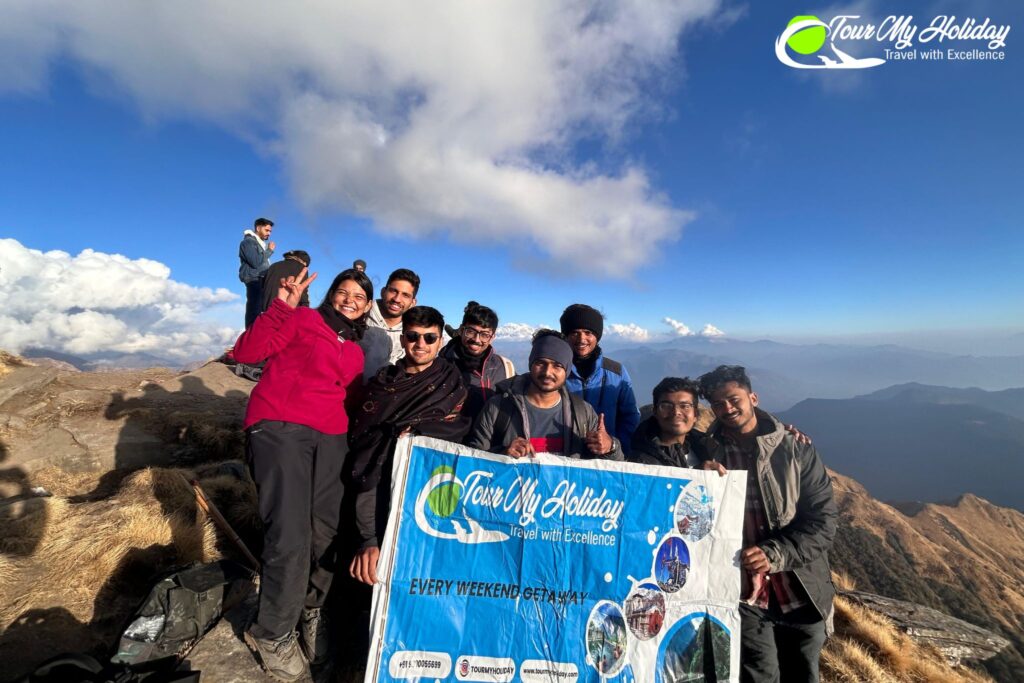
4. Electronics:
- Power Bank: Charging opportunities are limited, so carry a fully charged power bank for your phone and camera.
- Camera or Smartphone: Don’t forget to capture the breathtaking views of the mountains, valleys, and the temple itself.
5. Documents and Permits:
- ID Proof: Carry a valid ID proof (like an Aadhar card, passport, etc.).
- Trekking Permit: If required, ensure you have the necessary permits for the trek (usually arranged by tour operators).
- Cash: Some areas may not have ATMs, so it's a good idea to carry some cash.
6. Optional Items:
- Binoculars: For those who enjoy birdwatching and appreciating the distant views.
- Camera Lens/Accessories: If you’re a photography enthusiast, you might want a telephoto lens or other accessories.
- Notebook/Journal: If you enjoy writing or journaling your travel experiences.
- Multi-tool/Swiss Army Knife: Useful for any emergencies, but make sure it's allowed on the trek.
7. Weather-Specific Additions:
- Winter Treks (December - February):
- Heavy-duty winter jacket.
- Thermal socks.
- Snow gaiters to prevent snow from entering your shoes.
- Monsoon Treks (July - September):
- Waterproof backpack cover.
- Waterproof trekking shoes or gaiters to keep your feet dry.
By packing carefully, you can ensure a comfortable and safe trek to the magnificent Tungnath Temple, surrounded by the majestic Himalayan landscape.

Chopta Tour Packages: An All-Inclusive Experience
For those looking for a hassle-free trekking experience, Chopta tour packages are an excellent option. These packages typically include transportation from Delhi to Chopta, accommodation, meals, trekking permits, and a trained guide who will accompany you throughout the trek. Most Chopta tour packages are designed to provide a complete experience, allowing you to enjoy the beauty of Chopta, Tungnath, Chandrashila, and Deoria Tal in a well-organized manner.
By opting for a Chopta tour package, you can ensure that your travel and trekking arrangements are taken care of, allowing you to focus solely on your trekking experience. Many tour operators also offer customizable packages, which allow you to choose the duration of your trip and add other activities like camping and sightseeing.
Trekking Tips for the Chopta Tungnath Trek
- Physical Fitness: While the Chopta Tungnath Trek is moderate in difficulty, it’s important to be in good physical shape. A little bit of preparation before the trek can help you enjoy the experience without feeling overly fatigued.
- Pack Light but Smart: While trekking, pack only the essentials. This includes warm clothing, a rain jacket, trekking shoes, a first-aid kit, and snacks.
- Altitude Acclimatization: As you trek higher, the altitude may cause fatigue and altitude sickness. It’s important to acclimatize gradually and stay hydrated.
- Guide and Permits: It is highly recommended to hire a local guide for the trek, especially if you are new to the region. Ensure that you have the necessary trekking permits in advance.
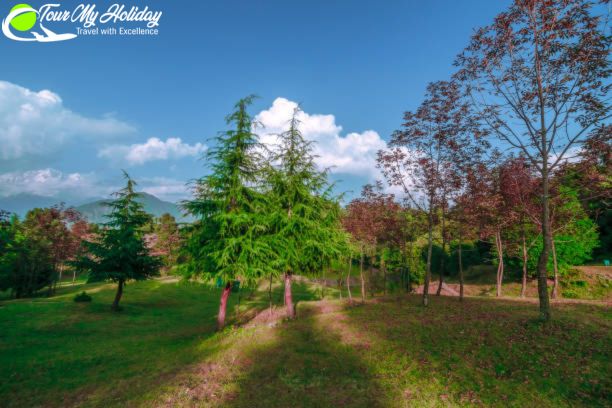
The Chopta Tungnath Trek is a journey that promises an unforgettable adventure through the heart of the Himalayas. Whether you’re trekking to Tungnath Temple, summiting Chandrashila, or exploring the beauty of Deoria Tal, this trek offers a perfect blend of natural beauty, spiritual experiences, and physical challenges.
With well-organized Chopta tour packages and expert guides, your trek from Delhi to Chopta will be a smooth and memorable experience. So, pack your bags, book your trek, and get ready to witness the breathtaking views and serene landscapes of one of India’s most stunning trekking destinations!
